Features of care and cultivation of climbing roses
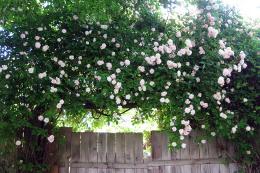
Among connoisseurs - florists, gardeners, both amateurs and professionals, there are no people indifferent to roses. When choosing flowers for planting on a summer cottage or in the area adjacent to the house, you should pay special attention to the climbing rose. They are widely popular among lovers of landscape design, they are simply irreplaceable when choosing a vertical gardening method, and they have the excellent property of being able to combine with different styles, complement and decorate garden plots.
Content:
- Features and varietal differences of roses
- Planting and growing methods
- Caring for roses over several years of life
- Ways to fight diseases
Features and varietal differences of roses
Lush flowering and the unique scent of roses attracts everyone. Therefore, many people strive to grow roses on their plots. But not many people know how whimsical these plants are, how capricious they are and what kind of care they require. In addition to subtleties in cultivation, there are also differences in varieties. Each variety of climbing roses has its own characteristics, which must be taken into account when choosing this plant as a garden decoration.
There are several main varieties of climbing roses:
- Rambler. Roses are distinguished by large and lush inflorescences; this variety of roses blooms for a long period of time, but is not capable of repeated flowering. Powerful, lush vines create a beautiful green hedge, which is decorated with beautiful fragrant flowers throughout the summer.
- Climber.A more resilient variety, characterized by increased reliability and resistance to diseases. The flowers of this variety are large and lush, blooming 2-3 times during the summer. But the distinctive feature of this variety is the lashes; they can reach a height of 4 m, and are perfect for decorating high fences and walls of the house.
- Cordesa. A relatively young variety of climbing roses, the main difference of which is the violent flowering for a long time, until late autumn.
- Dortmund. One of the most common varieties, it is considered ideal for growing in any area. These roses bloom continuously throughout the summer.
- New Dawn. The variety is moderately resistant to disease. It reaches a height of about 2 m. It is known for the graceful curvature of its shoots, which allows the flowers to be used for decorating bouquets.
Planting and growing methods
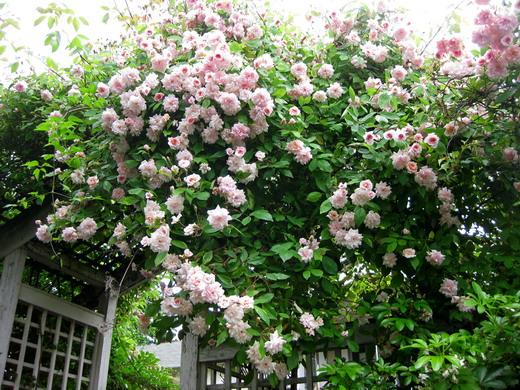
In order to divorce climbing roses on your site, you need to choose good varieties, necessarily grafted, shoots should be smooth, without signs of disease. The entire planting process can be divided into several stages:
- Choice of time and place. Early spring is best for planting bushes. It is at this time that roses take root faster and endure the transplantation procedure less painfully. The soil should be fertile, rich in microelements; you can apply fertilizer in advance. The site should be open to the sun, since climbing roses are light-loving plants.
- Preparing the pit. The size of the hole depends on the size of the bush, but on average it is 50-70 cm in depth and width. Each hole is pre-fertilized, watered and only then planted.A distance of up to half a meter is maintained between bushes in order to provide each plant with the amount of sunlight it needs.
- Preparing the plant. Before planting, it is necessary to trim the seedling; the most optimal would be a seedling of 20-30 cm. After this, it is treated with humates. The root system can be pre-wrapped with plastic film. It can create a greenhouse effect and stimulate the growth of the root system.
- Directly planting the plant. The roots must be freed from the film and distributed evenly in a pre-prepared hole. Then they are sprinkled with a small amount of earth and compacted. Only if there are no voids in the root system can the hole be completely filled with soil. In this case, the level of grafting is taken into account; it should be several cm above the ground.
- Watering and fertilizing. After the plant is planted, it is watered with warm water and a solution of manure.
On this planting process finished. How viable the rose turns out to be, how quickly it takes root, will depend on further care, as well as the desires and care of the gardener.
Caring for roses over several years of life
After planting, one of the most important periods in the life of the plant begins - the first year of life. It is at this time that it is determined how well it will take root, what properties it will have, how hardy it will be, whether it will be prone to lush flowering, and so on. During the first year of life, you must follow a few simple rules:
- Root feeding. For root feeding, it is best to use an infusion of wood ash and manure. The roots of the plant are fertilized with this infusion no more than once every 2 weeks.
- Foliar feeding.The same solution is used, but the leaves of the rose are sprayed with it. This is done once, preferably at the beginning of summer.
- Preparation shelters for wintering. In November, a kind of house is usually prepared. The rose vines are bent to the ground and covered with pine branches. They allow you to protect the plant from frost, wind and moisture, and ensure proper air circulation. To protect the plant from rot, you can place a board under the lashes.
- Spring pruning. After winter it is necessary to bring the plant back to life. To do this, all the lashes must be inspected, checked, damaged, frozen or rotten trimmed, straightened and strengthened.
- Treatment. To prevent various diseases, climbing roses are recommended to be treated with Bordeaux mixture in early spring.
This completes the first stage of the young plant’s life. The second year begins. By this time, roses become stronger, more resilient and require less care. It mainly consists of timely watering and infrequent feeding. It is also necessary to monitor the vines, cut off dried or damaged ones, give the plant an attractive appearance and free it from unnecessary load.
Ways to fight diseases
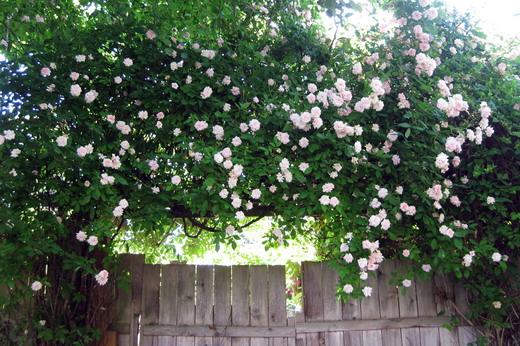
Like any plant, climbing roses are no less susceptible to various diseases than others. The most common diseases and growing problems include:
- Calcium deficiency
- Powdery mildew
- Black spot
- Rust
- Insects (aphids)
Various methods are used to eliminate and prevent plant diseases. You can use only agro-industrial and chemical preparations, you can use folk remedies, or combine both methods of protection.
For example, to combat insect pests, you can use a solution of insecticides, to which a solution of laundry soap is added to enhance the destructive effect on insects. To replenish calcium deficiency, a spray solution is prepared. It includes copper sulfate, liquid soap and hot water.
To combat the most common disease – powdery mildew is treated with various decoctions and infusions of plants, such as horsetail and nettle. You can also use onion peels. To prevent the spread of the disease, all dead and infected plant shoots are cut off and destroyed.
For prevention purposes, a solution of foundationazole is used. Fandazol can also be used to combat rust and black spots; for this purpose, it is used in combination with Bordeaux mixture at a concentration of 1%. To prevent rust, there is a proven folk remedy - tomato shoots and dandelion leaves are collected during the period of plant growth, filled with warm water and infused until the fermentation period.
Preventive measures can keep the plant blooming throughout the summer, as well as protect neighboring plants from infection. Methods for processing climbing roses do not require special skills; solutions and decoctions are mainly used.
The rose is rightly called the queen of flowers, because only it has unique grace, sophisticated beauty and elegance, and a magnificent aroma. Climbing roses have all of the above properties. They undoubtedly require especially careful, constant attention and care; they are capricious and demanding.
But many gardeners love them precisely because they are able to give all the love and care that is given to them in the form of beautiful inflorescences and fragrances.Every garden must have its own queen.
Interesting video about caring for climbing roses and their propagation:
Interesting information about the vegetable garden






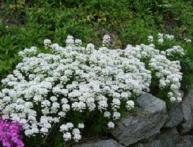


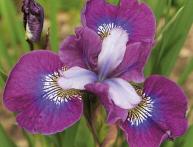

Comments
Yuki, tell me, is it harder to grow climbing roses compared to ordinary ones? Because I somehow succeed with bushes every now and then, but I would really like to decorate the arch for the recreation area at the dacha beautifully.
Please tell me, can the Climber variety be grown in a plot with clay-limestone soil?
I have never seen such arches in real life. I really want to grow such beauty in my garden.